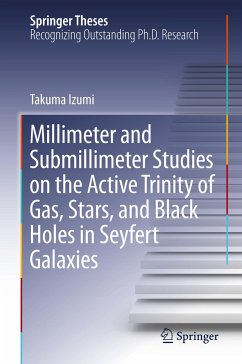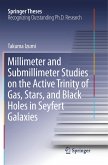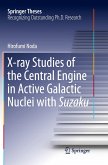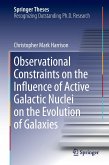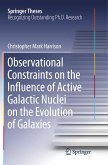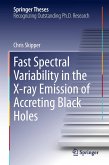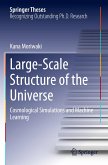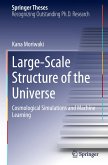This thesis focuses on understanding the growth and formation mechanism of supermassive black holes (SMBHs), an issue it addresses by investigating the dense interstellar medium that is assumed to be a crucial component of the fuel for SMBHs. The thesis also offers unique guidance on using the Atacama Large Millimeter/submillimeter Array (ALMA) in active galactic nuclei (AGN) research.
The author presents the three major findings regarding SMBH formation and growth: (1) The development of a new diagnostic method for the energy sources in galaxies based on submillimeter spectroscopy, which allows identification of accreting SMBHs even in obscured environments, (2) the discovery that the circumnuclear dense gas disk (CND), with a typical size of a few tens of parsecs, which plays a crucial role in governing the growth of SMBHs, and (3) the discovery that the mass transfer budget from the CND to the central SMBHs can be quantitatively understood with a theoretical model incorporating the circumnuclear starburst as a driver of mass transfer. The thesis skillfully reviews these three findings, which have greatly improved our understanding of the growth mechanism of SMBHs.
The author presents the three major findings regarding SMBH formation and growth: (1) The development of a new diagnostic method for the energy sources in galaxies based on submillimeter spectroscopy, which allows identification of accreting SMBHs even in obscured environments, (2) the discovery that the circumnuclear dense gas disk (CND), with a typical size of a few tens of parsecs, which plays a crucial role in governing the growth of SMBHs, and (3) the discovery that the mass transfer budget from the CND to the central SMBHs can be quantitatively understood with a theoretical model incorporating the circumnuclear starburst as a driver of mass transfer. The thesis skillfully reviews these three findings, which have greatly improved our understanding of the growth mechanism of SMBHs.

